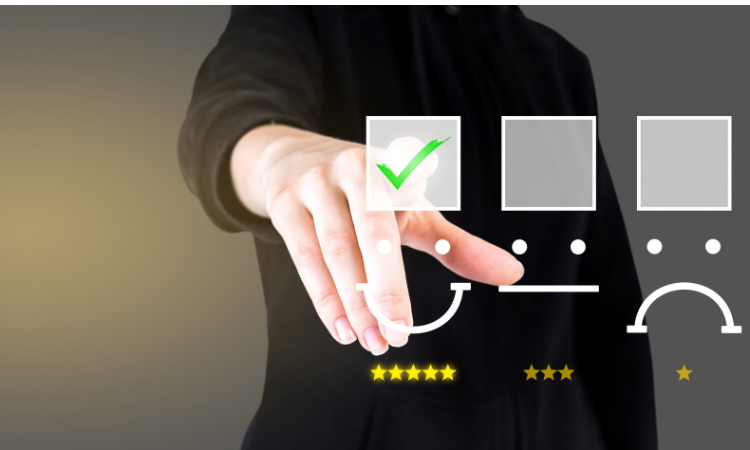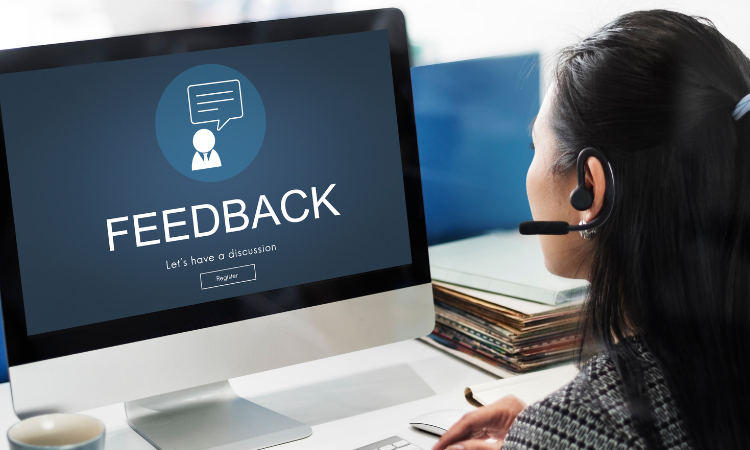Want to measure & improve your Helpdesk Customer Experience? Check out this blog to find quick tips to get started.
Exceptional Customer Service is no longer just a luxury; it's a necessity. So much so that the value of a great Customer Experience and service has surpassed factors like price and product. Some studies even suggest that more than 85% of customers are willing to pay more for a better service.
As the frontline of your customer interaction, the helpdesk plays a pivotal role in how customers perceive your brand and their experience with it. And you need to measure the customer experience in your helpdesk operations to assess different aspects of customer service and identify areas of improvement.
Measure Customer Experience In Helpdesk
With Customer Feedback Surveys, understand how satisfied your customers are with the support offered by your Helpdesk and learn ways to delight them.

In this blog, we will provide some amazing tips and tricks to measure Customer Experience with your Helpdesk services, why you should measure the key customer service metrics, and how you can get started. Whether you are a seasoned Helpdesk Manager or you are just beginning with managing Helpdesk, these tips will help you effectively measure, improve, and automate CX for your Helpdesk. Let’s start with exploring what Helpdesk Customer Experience is and why it is important to measure it.
Table of Contents
- What is Helpdesk Customer Experience?
- CES Survey Template to Measure Helpdesk Experience
- Why measure Customer Experience in Helpdesk?
- Tips to Get Started with Measuring Helpdesk Experience
- Define clear objectives
- Use appropriate CX metrics
- Utilize multiple feedback channels
- Collect both qualitative and quantitative feedback
- Analyze the feedback data and segment the responses
- Develop a closed-loop feedback mechanism
- Communicate and share feedback with the support team
- Use an effective Customer Feedback Software
- Measuring Helpdesk Experience with Zonka Feedback
What is Helpdesk Customer Experience?
Helpdesk Customer Experience refers to the overall perception and satisfaction of the customers with the support services provided by the Helpdesk of your Customer Support team. Helpdesk Feedback encompasses the part of the customer journey, from the customers’ initial contact with the helpdesk through the resolution of their issue or inquiry.
CES Survey Template to Measure Helpdesk Experience
Customer Effort Score (CES) is a valuable metric that can help you measure the effectiveness and efficiency of your helpdesk experience. By implementing a CES survey template, you can gain valuable insights into how much effort your customers have to put in to resolve their issues or inquiries.
Here is a CES Survey Template that you can use to measure Helpdesk experience.
Let’s learn why it is necessary to gauge this experience.
Why Measure Customer Experience in Helpdesk?
- To identify areas of Improvement
- To enhance Customer Loyalty
- To improve Employee Engagement
- To measure your Helpdesk Team’s performance
- To stay ahead of the Competition
Measuring Customer Experience in Helpdesk is necessary to know how your customers perceive the helpdesk and support services you provide to the customers. Measuring this experience is useful for various reasons.
-
To identify areas of Improvement: Measuring Customer Experience helps identify pain points and areas where customers may be facing challenges. This allows you to make targeted improvements to processes, policies, and support systems, resulting in enhanced Customer Satisfaction.
There can be several issues that your customers may be facing, like long waiting times, difficult options to reach support executives, late resolution, or anything that may affect their Helpdesk Experience. Gauging CX helps you know about these issues and work in the direction of improving your helpdesk services.
-
To enhance Customer Loyalty: Measuring Customer Experience enables you to gauge customer satisfaction levels, identify loyal customers, and understand the factors that contribute to their loyalty. By addressing their needs and preferences, you can cultivate long-term loyalty, drive repeat business, and benefit from positive word-of-mouth referrals.
-
To improve Employee Engagement: Measuring Customer Experience includes involving frontline agents, recognizing exceptional performances, and collecting feedback during customer interactions. This empowers employees, boosts morale, and fosters a sense of ownership, leading to increased Employee Satisfaction & Engagement and motivation to deliver exceptional customer service.
-
To measure your Helpdesk Team’s Performance: Measuring Customer Experience provides valuable insights into the performance of your helpdesk team. By tracking metrics like Customer Effort Score (CES), Customer Satisfaction (CSAT) Score, and Net Promoter Score (NPS), you can assess how well your team is able to satisfy your customers and meet their needs. This helps you identify areas where your helpdesk staff requires more training or process improvements.
-
To stay ahead of the Competition: Measuring Customer Experience allows you to benchmark your helpdesk's performance against industry standards and competitors. By continuously striving to exceed customer expectations, adopting innovative practices, and delivering exceptional support, you can differentiate your helpdesk, attract new customers, and maintain a competitive edge in the market.
Tips to Get Started with Measuring Helpdesk Experience
- Define clear objectives
- Use appropriate CX metrics
- Utilize multiple feedback channels
- Collect both qualitative and quantitative feedback
- Analyze the feedback data and segment the responses
- Develop a closed-loop feedback mechanism
- Communicate and share feedback with the support team
- Use an effective Customer Feedback Software
Let’s learn how you can implement these best practices and get started with measuring Customer Experience with your Helpdesk.
1. Define clear objectives
The first and foremost step to measuring Helpdesk Experience is defining clearly the objectives of doing it. Ask yourself what you want to measure CX.
- Do you want to track the reasons for the decline in sales?
- Do you want to track the performance of your helpdesk team?
- Do you want to control the cost spent on Helpdesk?
- Do you want to measure and reduce the response time?
- Do you want to measure the costumes’ effort in getting the work done through Helpdesk?
- Do you want to track how your helpdesk executives are behaving with your customers?
- Do you want to ensure that customers' issues are resolved?
- Do you want to know whether the Helpdesk Experience that your customers receive is able to build a loyal customer base for you?
It is crucial to define clear objectives that align with your business goals. This will provide focus and direction to your measurement efforts, ensuring that you gather the right data and track relevant metrics.
For example, if your objective is to build more loyal customers, you can measure Customer Experience via Net Promoter Score by conducting NPS Surveys.
2. Use appropriate CX metrics
When your objective is clear, you can consider measuring CX metrics and surveys for your helpdesk accordingly. You can also consider using a combination of metrics such as Net Promoter Score (NPS), Customer Satisfaction (CSAT), and Customer Effort Score (CES) to capture different dimensions of the customer experience.
NPS measures customer loyalty and the likelihood of recommending your helpdesk, while CSAT gauges overall customer satisfaction with their support interactions. CES assesses the ease of resolving issues and minimizing customer effort. By using a mix of these metrics, you can gather a holistic view of customer sentiment and identify areas for improvement. For instance, a low CSAT score may indicate the need to enhance the quality of customer interactions or streamline your support processes.
3. Utilize multiple feedback channels
To gain comprehensive insights into Helpdesk Experience, it is important to utilize multiple feedback channels. Consider implementing surveys with post-purchase survey questions, popup survey questions, or embedded surveys on your website and sending emails or text messages to your customers just after an interaction.
By diversifying your feedback and survey collection channels, you can gather feedback from different customer segments, capture a broader range of perspectives, and identify patterns or trends in customer feedback.
4. Collect both qualitative and quantitative feedback
Helpdesk Feedback is important to gauge your customers' experiences with your helpdesk but you cannot rely only on the quantitative feedback. In addition to quantitative data, collecting qualitative feedback is crucial for understanding the nuances of customer experiences. Qualitative feedback provides rich context and helps you uncover the underlying reasons behind specific customer sentiments. Consider incorporating open-ended Helpdesk Survey Questions to gather qualitative feedback.
Analyzing qualitative feedback allows you to gain deeper insights into customer pain points, preferences, and expectations. By combining quantitative metrics with qualitative feedback, you can gain a more comprehensive understanding of the overall Helpdesk Experience and identify specific areas for improvement.
For instance, you get a bad Customer Satisfaction rating while gathering quantitative feedback. You can follow up on that response through an open-ended question asking the reason for a low satisfaction rating to know the why behind the low rating.
5. Analyze the feedback data and segment the responses
Once you have collected feedback data, it is important to analyze it systematically and segment the responses. Analyzing the data allows you to identify trends, patterns, and common themes in Customer Feedback.
By segmenting the responses based on customer demographics, product usage, or interaction types, you can gain more granular insights and tailor your improvement efforts accordingly. For instance, using user segmentation or segmenting feedback by customer demographics might reveal different needs and expectations among various customer groups, enabling you to optimize the helpdesk experience for different customer segments and create personalized support experiences for them.
6. Develop a closed-loop feedback mechanism
Implementing a closed-loop feedback mechanism is a crucial step in the measurement of Helpdesk Experience. This involves following up with customers after their interactions to gather post-resolution feedback and ensure their satisfaction.
By closing the feedback loop, you demonstrate your commitment to addressing customer concerns and improving their experience. It also provides an opportunity to address any outstanding issues, clarify any misunderstandings, or offer additional assistance if needed.
For example, a follow-up email can be used to ask customers about their satisfaction level with the resolution provided, thank them for their feedback, and assure them that their input is valued. This closed-loop approach not only helps you collect valuable insights but also strengthens customer relationships and enhances their perception of your helpdesk's dedication to their satisfaction.
7. Communicate and share feedback with the support team
Share feedback results with your support and customer service team. It is necessary to involve your support agents to foster a culture of continuous improvement. Regularly communicate both positive feedback and areas for improvement to the team, ensuring transparency and accountability.
Sharing positive feedback reinforces the team's efforts and boosts morale while discussing areas for improvement allows for collaborative problem-solving. For instance, organizing team meetings or dedicated communication channels to share feedback and discuss improvement initiatives can create a sense of ownership and collective responsibility among support team members.
It is important to encourage an open dialogue, listen to team members' insights and suggestions, and jointly develop action plans to address identified gaps. By involving the support team in the feedback process, you create a shared commitment to delivering exceptional helpdesk experiences and driving positive change. Part of this commitment includes strong on-call management, ensuring the team is always ready to provide support when needed, even outside regular hours.
8. Use an effective Customer Feedback Software
To simplify the entire process of measuring the Helpdesk Experience and collect accurate and valuable feedback data, always use effective Customer Feedback Software. Look for a software solution that allows you to collect feedback from multiple channels, centralize the data, and generate actionable insights.
An effective software platform not only helps you to collect feedback and measure CX, but it also helps you take instant action on feedback and close the feedback effectively, thus ensuring Customer Satisfaction. This also enables you to make data-driven decisions, track the impact of improvement initiatives, and continuously enhance the helpdesk experience for your customers.
Measure Helpdesk Experience with Zonka Feedback
Zonka Feedback is one such tool that helps you measure and improve CX effectively through powerful surveys. Powered by features like Skip Logic, it not only helps you create and share responsive and dynamic surveys through multiple channels but also shares real-time feedback alerts to enable you to take timely actions on the feedback and improve CX.
The tool also offers a Free Trial. You can try Zonka Feedback for free for 14 days and see how it works to improve your Helpdesk’s performance












